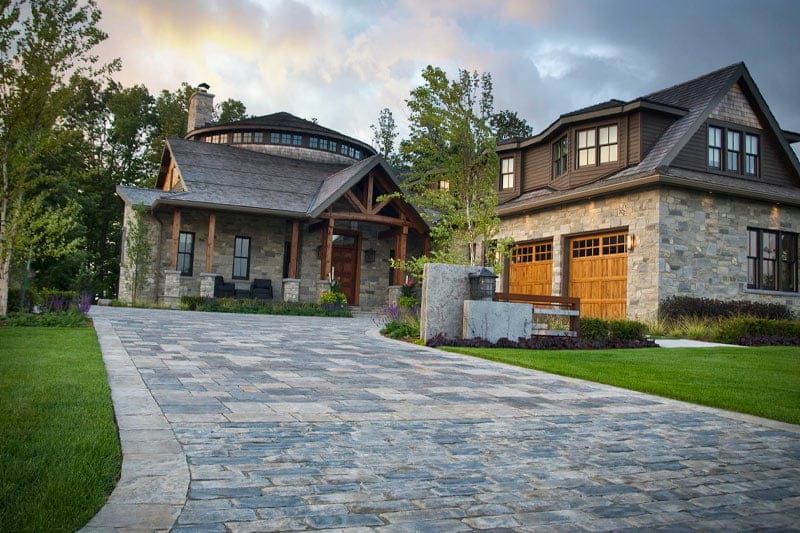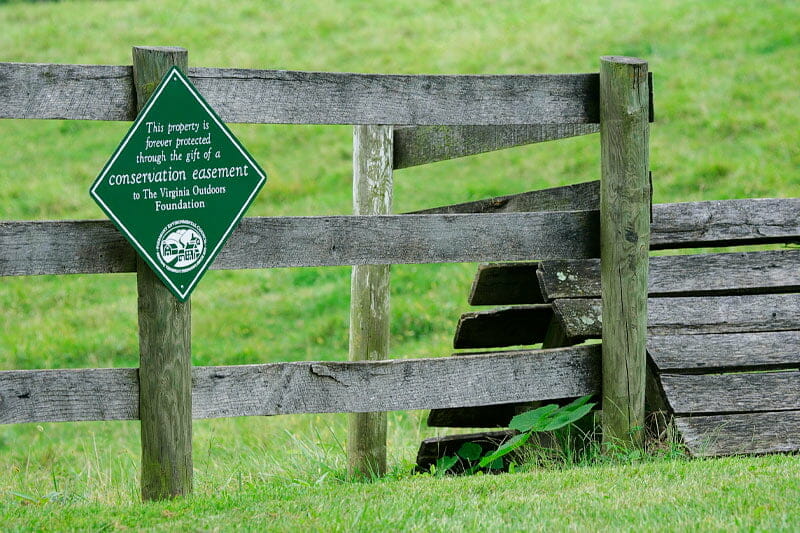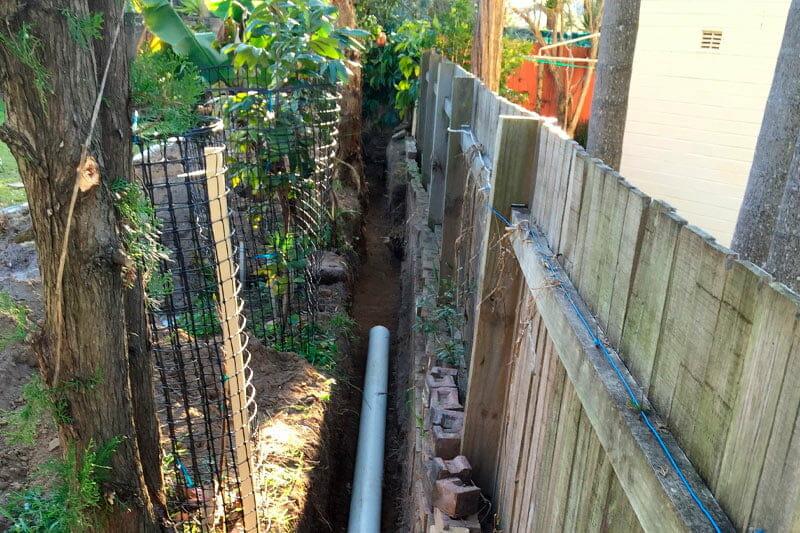An easement gives someone else permission to utilize a part of your land. This is officially recorded in your property’s deed, ensuring you are aware of these rights before you purchase or develop the land.
Yes, you can build on an easement. However, when the entity with the right to the easement needs it, you will have to pull down your fence. Depending on the entity, they may or may not help to rebuild the fence.
A variety of easements can be claimed on your property. Before building anything on your property, find out where the easement is. It will help avoid a range of problems in the future.

Types Of Easements On Your Property
Utility Easement
Utility easements can be above or below the ground. Natural gas lines and sewer lines are some of the below-the-ground easements that could be running through your property. Electrical power lines are above-the-ground easements that can be installed on part of your property.
Sidewalk Easement
They can be found on many properties. They allow for a sidewalk to be built next to your property if one is not present.

Driveway Easement
If you divide a property into two parts, front and back, the property in the back must have a driveway easement for access.

Conservation Easement
It is an easement for a park or greenbelt on your property.

Stormwater Easement
This is an above or below-the-ground drainage easement. It ensures that your property has a proper drainage system. That stormwater can find a path around or below your house to eliminate any danger to your property or the surrounding environment.

How To Find Out If You Have An Easement On Your Property
Check your property title documents for any easement registered on your property. All easements are registered on the property title.
It ensures you know how much of your property can be covered with permanent structures. You can build temporary or movable structures where the easements are located.
When the easement holder needs to use your property, ensure that you provide access and remove any obstacles on the easement including plants and flowers.
Do not plant trees on an easement.
How To Avoid Building Your Fence On An Easement
Carry Out A Survey
Get a qualified surveyor to survey your property and get you the right property documents. It will cost you $500 to $1000 to complete a survey. It is a worthwhile expense that could save you much more money. If you build on an easement without your knowledge, you will lose more.
In the end, you will have more knowledge of the size and any encumbrances on your property. You will find out the best place to build a fence and if there are any easements on your property.
Check Rules And Regulations
Are there any rules and regulations in the community you live in or want to move to? Check with the local authorities on any rules they may have on where to build a fence on your property.
If there’s a homeowners association, consult them on any rules on where to build a fence on your property once you have put up your house.
Local authorities and homeowners associations come up with rules on how to build homes and fences in a certain region. Knowing and following the rules ensures that you don’t lose money in the future.
Can You Put A Gate Across An Easement
Yes, you can.
Depending on the type of easement on your property, you can install a gate. Once the gate is installed, ensure that the easement holders have access. This means that you should either give them a key or be available to open the gate whenever they need access.
For example, if you install a gate on a driveway easement on your property, you need to give a key to everyone who uses the easement.
If you build a gate on a utility easement on your property, you must be available to provide access to the easement whenever the utility company needs to use it.
Is An Easement In My Property Still My Property
Yes, if you have an easement on your property, it is your property. However, you have some restrictions on how you can use the part of the property with the easement.
For example, you cannot block a drainage easement by building on it or planting trees on it.
Find out your rights over an easement on your property from your local authorities, real estate expert, or professional fence installers. This ensures that you follow the law or rules and regulations given when you have an easement on your property.
Easement holders have a right to demolish or remove structures on the easement. Some utility companies can help you rebuild demolished fences on easements while others will not.
Does An Easement Affect Property Value
Easements may or may not affect the value of your property. The value of your property can only be negatively affected by an easement when it restricts your use of the property. Depending on the easement on the property, you will rarely have restrictions on the use of your property.
Thus, if you want to sell or buy a property with the easement, carry out the necessary due diligence. Find out the rules around easement use and maintenance and decide on whether to buy or sell the property.
The size of the easement compared to the size of the land may affect the value of the property. If you have a large easement on a small property, then your use of the property is limited. Thus, the value of the land may be negatively affected. If the easement is small, compared to the rest of the property, the property value is not affected.
Also, how common the easements are in the area may affect the value of the property. Where easements are common, the value of the property is not affected.
FAQ's
You can build a fence on an easement with the expectation that it may be brought down when the utility company that owns the easement needs it.
You can also build an above-the-ground hot tub or pool on an easement. Make sure they are easy to move and don’t interfere with any of the infrastructures on the easement.
You can also plant flowers and shallow-rooted plants on an easement. These will not prevent the easement owner from carrying out the task they need to. Flowers and shallow-rooted plants can be easily removed and replanted.
You cannot build permanent structures on an easement. For example, you cannot build an in-the-ground pool on an easement. Depending on the type of easement it is built on, it can easily damage the wires, pipes or block the drainage system.
You cannot plant trees on an easement. Trees have deep roots that can easily block drainage and stormwater easement. The utility provider may require you to remove trees from the easement for them to access their infrastructure.
Additionally, you are not allowed to change the topography of the easement. This will apply mostly with drainage easements. Changing the topography may affect how fast drainage takes place when it rains or, destroy the drainage system.
Yes, you can.
You can remove an easement from your property if you have a formal agreement with the easement holder. You can also remove obsolete easements from your property.
You can easily fence the easement site and incorporate it as part of your property. However, you need to have the easement officially removed from your land title.
Apply to the local authority office to have the easement removed from the title after you have agreed with the utility company. Or, if you think the easement on your land is outdated.
An easement created from necessity can end when the necessity over which it was created ceases.
Also, you can remove an easement if the period for which the easement was set up passes.
Permanent structures cannot be built over easement as they will hinder access of the easement holder.
When the utility company needs to access their infrastructure from your property, they cannot do it if you built permanent structures. Their tools, such as excavators may find it hard to work around permanent structures.
Even if they were to demolish the permanent structures on the easement, they will likely damage their infrastructure.
Thus, if you have an easement in your property, don’t build a permanent structure on it.
Easements are permanent unless there is an agreement and formal registration of their removal. If you buy a property that has an easement, you need to follow the rules of the maintenance of the easement. Easements remain valid even when the property transfers to a new owner.






